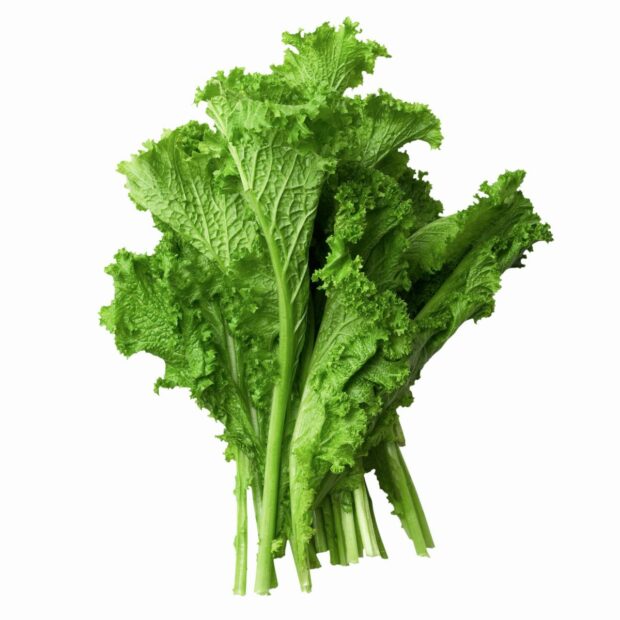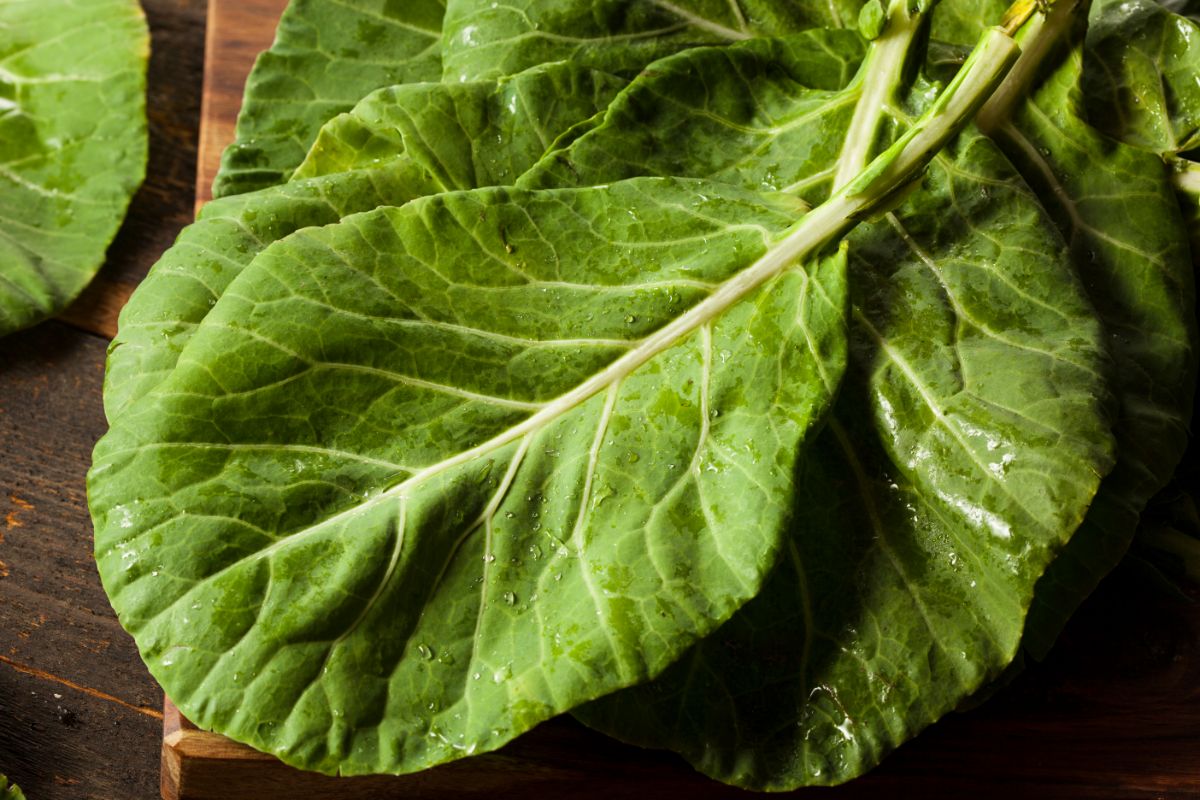Eating leafy greens is a great way to get extra vitamins and minerals in your diet, and they taste delicious. Indeed, there’s nothing quite like fresh mustard or collard greens to complement your meal. If you’re wondering about the difference between mustard greens and collard greens, you’ve come to the right place.

What Are Mustard Greens?
Mustard greens have seeds that can be ground into a flour or powder and used to make mustard. They are easy to grow and have a peppery flavor. They are also considered a herb and not an actual vegetable. The leaves are round or ruffled and can be green or even green tinted with purple or red.
The plant grows to be about two feet tall and its leaves have lots of vitamin C. Mustard greens have more fiber, more protein, and a few more calories than collard greens. They are part of the brassica family.

What Are Collard Greens?
Collard greens are also part of the brassica family, and their flavor is much milder than mustard greens. In fact, collard greens are very similar to spinach when it comes to taste. They also have a lot of vitamin K and some calcium.
Collard greens have large, deep-green leaves with white veins throughout. Collard greens grow to be around three feet tall and three feet wide, so their leaves are quite large. They are very hardy and easy to grow, and like mustard greens, they are frequently used in foods such as soul food.
Similarities and Differences Between Mustard Greens and Collard Greens
If you’re going to grow either mustard greens or collard greens, keep in mind that mustard greens grow best in full sun and in the fall and spring seasons when the temperatures are milder. Collard greens also grow best in full sun and are planted in the springtime, since they can better tolerate the summer heat. While mustard greens are considered a herb, collard greens are in the cabbage family.

Regarding vitamins and minerals, both mustard greens and collard greens are chock-full of them, but in differing amounts. For instance, one cup of raw mustard greens contains 120 per cent of your recommended daily intake of vitamin K. Two cups of raw collard greens nets you 128 per cent of your daily vitamin K. Vitamin K is good for blood clotting and bone strength.
And while calcium was mentioned earlier, keep in mind that neither mustard greens nor collard greens have a lot of this mineral. Two cups of raw collard greens give you 16 per cent of your daily calcium. A single cup of raw mustard greens provides only 4-5 per cent of your daily calcium. These are not bad numbers if you’re interested in bone health and need more calcium in your diet. Both mustard greens and collard greens also contain iron, vitamin B6, vitamin A, and potassium.
Taste
Raw collard greens have a somewhat bitter taste. Once you cook or boil them, however, their taste is much milder and earthier. By contrast, mustard greens have a peppery, almost spicy taste. They can be slightly bitter even when cooked, but not so bitter that you won’t want to eat them.

Can Mustard Greens and Collard Greens Be Used Interchangeably?
It’s best not to use mustard greens and collard greens interchangeably. Why? Because these two greens have completely different flavors. Kale, chard, and spinach, however, can be used in place of either one of these foods—but keep in mind that the flavor-matching won’t be exact with these ingredients, either.
Are Mustard Greens and Collard Greens Easy to Grow?
Both mustard greens and collard greens are easy to grow in a home garden, with mustard greens being a little easier. Stick to the right planting and growing seasons.
Overall, mustard greens and collard greens differ somewhat in appearance, size, taste, and color. Both are filled with vitamins and minerals and are low in calories and carbs. And they’re both easy to cook—you can boil or saute them with a little olive oil and some seasoning and then dig right in!
